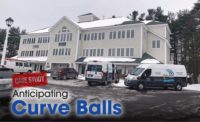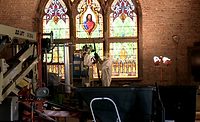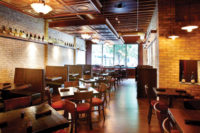Smoke damage restoration is one of the primary services of our industry. Many projects are fairly cookie-cutter while others require more effort to execute. This past winter, Soil-Away Cleaning & Restoration Services of New Hampshire was presented with a unique project that was outside of the everyday smoke damage cleanup loss.
A three-story, New Hampshire barn built in 1839 had a fire. Fortunately, only a very small part of the structure was destroyed. That was the good news for the property owner. The bad news was that historic structure was heavily impacted by smoke and soot damage. In addition to the damage to the barn, the nearby home sustained smoke odor damage. Both the barn and home needed a lot of work.
After a failed effort by another restoration contractor, Soil-Away was called in by the large loss adjuster to salvage the project. The insurance company was extremely concerned about their exposure because of the historic nature of the property. A Soil-Away project manager, adjuster and the homeowner collaborated on a scope that would give the best chance of saving the barn and deodorizing the house.
The majority of the work on this restoration project was concentrated on the barn. The three-story structure was built from rough-cut lumber. This surface excelled at trapping soot. Traditional methods such as hand wiping with dry-sponges and towels would not be effective at removing the soot. Soil-Away crews utilized HEPA vacuuming and dry-ice blasting. Working methodically top-to-bottom, the entire 2,000 square foot structure was HEPA vacuumed. This was followed by dry-ice blasting and a second round of HEPA vacuuming. The process was very detailed and slow due to the size and nature of the structure. Nevertheless, section-by-section the barn slowly returned to pre-loss condition.
Thankfully, saving the home was a much easier task. Through regular cleaning using dry sponges, wiping down walls, and ozone technology, it was a quick cleanup and deodorizing process.
Soil-Away had to overcome many challenges over the course of this project. First was the skepticism and frustration of the property owner. The first restoration contractor assigned to the job had failed. The project was inherited with a client short on patience and doubtful that a satisfactory outcome could be achieved. The second challenge was battling the winter weather. The project started in mid-January and continued on-and-off until early March. Record-low temperatures and snowfall in New England created several logistical obstacles to overcome. The final challenge was the scope of the job itself. The volume of detailed work on this loss required an above-average level of attention to detail and expertise.
The project ended with a satisfied client and insurance company. The barn was saved. Communication and a lot of hard work were the keys to success on this loss. Setting proper expectations for all parties involved was vital at the onset of the project, including consistent communication with the homeowner and adjuster helped minimize any bumps in the road during the project. Finally, strong leadership from the Soil-Away onsite project manager allowed for efficient execution.








Report Abusive Comment